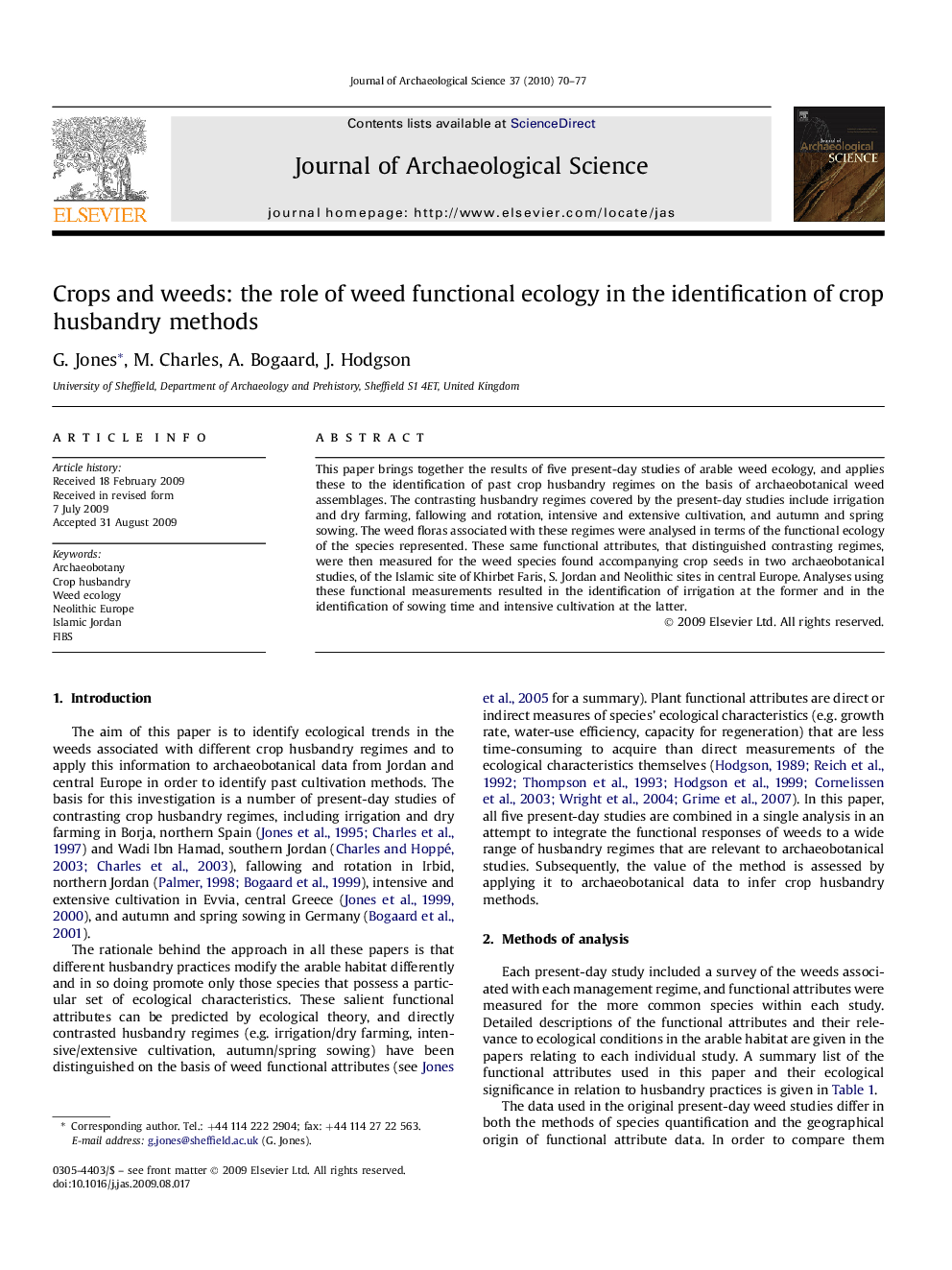| Article ID | Journal | Published Year | Pages | File Type |
|---|---|---|---|---|
| 1036776 | Journal of Archaeological Science | 2010 | 8 Pages |
This paper brings together the results of five present-day studies of arable weed ecology, and applies these to the identification of past crop husbandry regimes on the basis of archaeobotanical weed assemblages. The contrasting husbandry regimes covered by the present-day studies include irrigation and dry farming, fallowing and rotation, intensive and extensive cultivation, and autumn and spring sowing. The weed floras associated with these regimes were analysed in terms of the functional ecology of the species represented. These same functional attributes, that distinguished contrasting regimes, were then measured for the weed species found accompanying crop seeds in two archaeobotanical studies, of the Islamic site of Khirbet Faris, S. Jordan and Neolithic sites in central Europe. Analyses using these functional measurements resulted in the identification of irrigation at the former and in the identification of sowing time and intensive cultivation at the latter.
